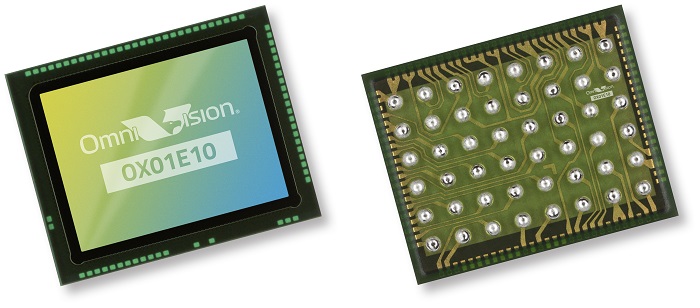By Gina Roos, editor-in-chief
OmniVision Technologies, Inc. has launched its 1.3-MP OX01E10 SoC, delivering high imaging performance for entry-level rearview cameras (RVCs) across challenging lighting conditions in a small form factor and at the lowest power consumption.
The imager’s power consumption is more than 35% lower than competitive devices and significantly reduces temperature, said OmniVision. In addition, it’s the only imaging device for entry-level RVCs that doesn’t require a metal heat sink, which allows designers to use plastic camera module bodies to reduce cost.
The AEC-Q100 Grade 2-certified SoC provides 1.3-MP resolution and a 1,340 × 1,020 array size at 30 fps and offers both two-lane MIPI and 10-bit DVP interfaces.

In addition, the OX01E10’s image sensor is built on the PureCel Plus pixel architecture, which is known for its low-light sensitivity. It helps eliminate unnatural halos from LEDs and provides better contrast on bright days.
The OX01E10 integrates a 3-micron image sensor and an advanced image signal processor (ISP) in a single, 0.25-inch optical format package. In addition to touting excellent low-light performance and ultra-low power, it also improves reliability by using only one printed circuit board (PCB) by integrating the image sensor and ISP on a single chip, said OmniVision. This also results in a space and cost savings.
The SoC also features two onscreen display overlay layers for driver guidelines, as well as distortion correction. It also uses OmniVision’s dual-conversion-gain (DCG) technology to achieve a high dynamic range (HDR) of 120 dB with only two captures, compared to three required by the competition, according to the company. This minimizes motion artifacts while reducing power consumption and improving low-light performance.
Samples are available now, with mass production expected in Q3 2020.
Advertisement
Learn more about Electronic Products Magazine





